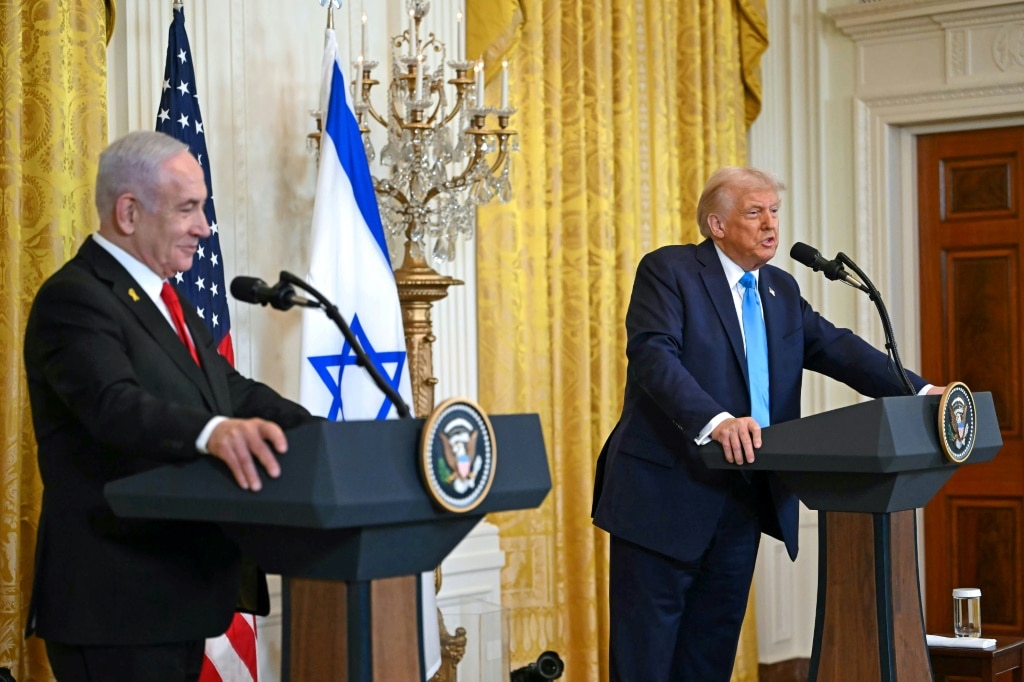Donald Trump lays out bold plan for Gaza
Donald Trump has given more insight into how the US would takeover the Gaza Strip without military intervention and why “stability for the region would reign”.
World
Don't miss out on the headlines from World. Followed categories will be added to My News.
Donald Trump has explained how America’s proposed takeover of the Gaza Strip would work, insisting it wouldn’t need military action and would ensure that “stability for the region would reign”.
“The Gaza Strip would be turned over to the United States by Israel at the conclusion of fighting,” Mr Trump wrote via Truth Social.
“The Palestinians, people like Chuck Schumer, would have already been resettled in far safer and more beautiful communities, with new and modern homes, in the region. They would actually have a chance to be happy, safe, and free.
Mr Schumer, a Jewish Democrat from New York, is not Palestinian. Mr Trump said the longtime New York senator had “become like a Palestinian” after he criticised the way Israel handled the war.
“The US, working with great development teams from all over the World, would slowly and carefully begin the construction of what would become one of the greatest and most spectacular developments of its kind on Earth,” he said.
“No soldiers by the US would be needed!”
It comes a day after the US President laid bare the proposal and said that “all” Gaza Strip residents should leave the war-shattered territory.
Trump’s remarks came during his Oval Office meeting with Israeli Prime Minister Benjamin Netanyahu on Tuesday.
“The US will take over the Gaza Strip, and we will do a job with it too,” Mr Trump said.
“We’ll own it and be responsible for dismantling all of the dangerous unexploded bombs and other weapons on the site, level the site, and get rid of the destroyed buildings — level it out and create an economic development that will supply unlimited numbers of jobs and housing for the people of the area.”
Mr Trump’s announcement that the US should take over the Gaza Strip has created a barrage of questions and rocked the region. Here’s what we know so far.
WHAT HAS DONALD TRUMP PROPOSED?
At a joint press conference with Israeli Prime Minister Benjamin Netanyahu, Mr Trump told reporters that the US should “own” the Gaza Strip, and that Palestinians who had been displaced by Hamas’s recent conflict with Israel should not be allowed to return.
Among other comments, the president described Gaza as a “hellhole” and “not a place for people to be living”, but declared it could also become “the Riviera of the Middle East”.
“The US will take over the Gaza Strip and we will do a job with it too. We’ll own it,” Mr Trump vowed.
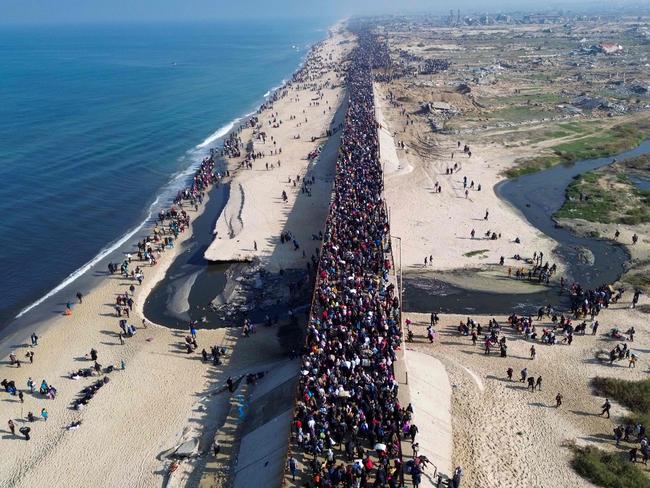
Mr Trump said “various domains” should be built “that will ultimately be occupied by the 1.8 million Palestinians living in Gaza.”
“The only reason the Palestinians want to go back to Gaza is because they have no alternative,” he said.
As for Gaza itself, Mr Trump said the US would be responsible for dismantling unexploded bombs, remove partially destroyed buildings and “level the site”.
Mr Netanyahu backed Mr Trump’s plan, describing it as “thinking outside the box with fresh ideas” and “showing willingness to puncture conventional thinking”.
He said it was “something that could change history”.
At a press conference after his statement, Mr Trump said he saw the Gaza takeover as a “long term ownership position” that would bring peace “and great stability” to the region.
“This was not a decision made lightly … everybody I’ve spoken to loves the idea of the United States owning that piece of land, developing and creating thousands of jobs with something that will be magnificent,” he said.
WHAT WOULD HAPPEN TO THE PEOPLE LIVING IN GAZA?
The Gaza Strip is currently home to 2.2 million Palestinians, overwhelmingly Muslim, although there is also a small Christian population as well.
In recent weeks Mr Trump had suggested Egypt and Jordan take in greater numbers of Palestinian refugees – an idea rejected by both countries.
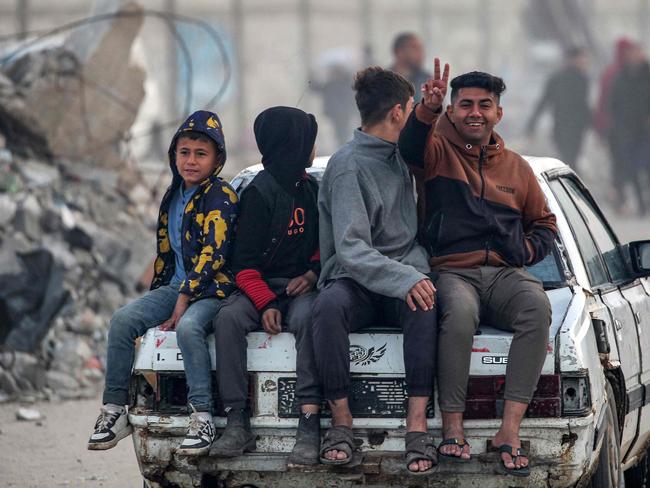
WOULD CONGRESS SUPPORT TRUMP’S PLAN?
The White House appeared to walk back elements of Mr Trump’s shock plan.
Press Secretary Karoline Leavitt on Wednesday said the Republican leader wanted Palestinians to be only “temporarily relocated” out of Gaza instead of permanently resettled in Arab-majority states like Egypt.
She also said the rebuilding of Gaza would not be paid for by the United States and that US troops were not likely to be sent.
“It’s been made very clear to the president that the United States needs to be involved in this rebuilding effort to ensure stability in the region for all people,” she said.
However, “that does not mean boots on the ground in Gaza, it does not mean American taxpayers will be funding this effort.”
The early reaction has been tepid from the President’s supporters and downright furious from his opponents.
Influential Republican senator Lindsey Graham warned it would be “problematic”, and that his constituents “would probably not be excited about sending Americans to take over Gaza”.
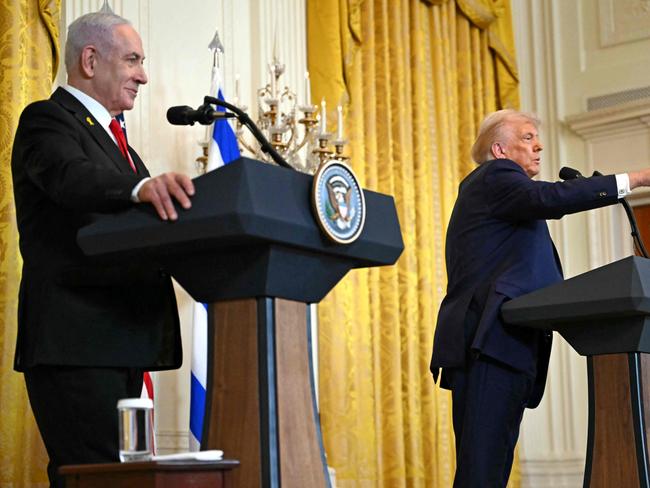
His colleague Josh Hawley said that it was not “the best use of United States Resources to spend a bunch of money in Gaza”.
And Republican Senator Thom Tilley said there were “a couple of kinks in that Slinky,” a reference to the easily-tangled children’s toy. Meanwhile, Democratic senator Chris Coons declared it was “between offensive and insane and dangerous and foolish”.
Fellow Democrat Richard Blumenthal added that it would “blow apart the Abraham Accords”, agreements negotiated by the first Trump administration to normalise Israel’s relations with its Arab neighbours.
The Palestinian-American Democratic Congresswoman Rashida Tlaib, the first Muslim to ever serve in Congress, said Mr Trump was “openly calling for ethnic cleansing”.
“He’s perfectly fine cutting off working Americans from federal funds while the funding to the Israeli government continues flowing.”
WHAT ARE AUSSIE EXPERTS SAYING?
Donald Trump’s comments on Gaza have sparked widespread criticism from Australian experts, raising serious concerns over their legal ramifications.
Experts have quickly pointed out that such an idea is not only illegal under international law, but also politically unfeasible.
Professor Ben Saul, Challis Chair of International Law at the University of Sydney and UN Special Rapporteur on Human Rights and Counter-Terrorism, sharply criticised Mr Trump’s recent remarks on Gaza, calling them “incredibly inflammatory” and “dangerous.”
He also expressed concern that Mr Trump’s suggestion to deploy US forces in Gaza and potentially displace Palestinians would violate international law.
“I hope it’s a thought bubble, and that Donald Trump is not serious about exposing US soldiers to be killed by Hamas fighters,” Professor Saul said.
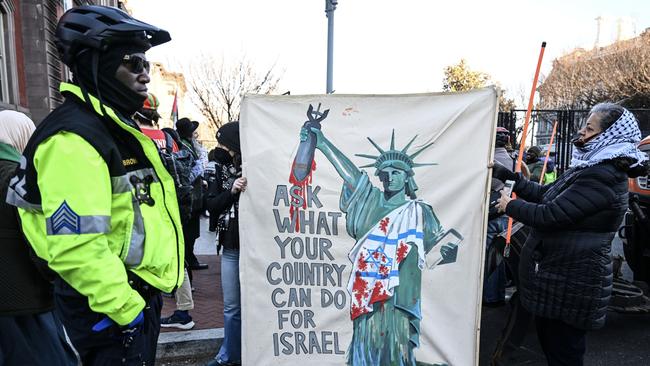
“I don’t think he wants to spend $80 billion that is required to rebuild Gaza after the conflict of the last 16 months.
Dr Eyal Mayroz, senior lecturer in human rights and international peace and security at the University of Sydney, said Mr Trump’s statements as “vague and illogical,” noting that administration officials have already walked back key elements of his claims.
Dr Mayroz believes the president’s comments may have even been an attempt to regain coalition support for Israeli Prime Minister Netanyahu.
“The world is in uproar, and that’s not a new thing. Trump loves to make waves and come up with outrageous ideas,” Dr Mayroz said.
“The Arab states that Trump says will take in millions of Palestinians have already said they will not take them in.”
Dr Mayroz said the real solution to the Gaza crisis will lie in a permanent ceasefire and international co-operation.
“I can’t see a positive solution unless there is some kind of permanent ceasefire, maybe based on an agreement between Israel, Saudi Arabia, and the US, the situation in Gaza will remain untenable,” he said.
WILL THIS BREACH OF INTERNATIONAL LAW?
Professor Saul also warned of the serious legal implications of Mr Trump’s comments.
“Under international law, it’s prohibited to threaten to use force to take foreign territory, as he did in his announcement,” he said.
“It would violate the Palestinian right to self-determination to choose their own political future, which they have indicated they want to be a Palestinian state, not to be part of the United States.”
“After the Second World War, it was made a war crime to forcibly displace the population of occupied territory.
“That, of course, was exactly what the Nazis had done in Eastern Europe, and that’s why the new rule was adopted to stop that from happening again.”
While international law may lack a central enforcement body, Professor Saul emphasised the role of global pressure and diplomacy.
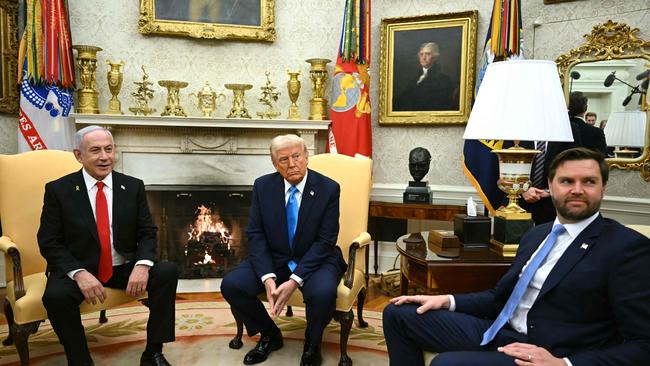
“When the most powerful country in the world threatens to use military force to take another country’s land and expel its population, I really think that is a red line when all responsible states who care about the international rule of law and human rights need to stand up,” he said.
“And they need to stand up forcefully and oppose that kind of rhetoric, because even the rhetoric is very dangerous.
“Countries can respond by imposing sanctions, as we did with Russia in Ukraine, or even bringing cases before the International Court of Justice.”
“These comments also kind of start chipping away at the taboo on invading other countries and taking their land, and that opens the door to other countries to do the same thing.
“I mean, international law relies on most countries most of the time, agreeing that there are minimum rules of behaviour you always have to follow.
WHAT ARE PALESTINIANS SAYING?
The Palestinians have reacted strongly against Mr Trump’s announcement.
Senior Hamas official Sami Abu Zuhri said in a statement: “Our people in the Gaza Strip will not allow these plans to pass. What is required is an end to the occupation and aggression against our people, not their expulsion from their land.”
The Palestinian envoy to the UN, Riyad Mansour, said people should respect the wishes of the people affected.
“Our homeland is our homeland, if part of it is destroyed, the Gaza Strip, the Palestinian people selected the choice to return to it. And I think that leaders and people should respect the wishes of the Palestinian people.”
Supporters of the Palestinian cause, who had already gathered to protest the arrival of Benjamin Netanyahu, were joined by more demonstrators shortly after Mr Trump made his announcement.
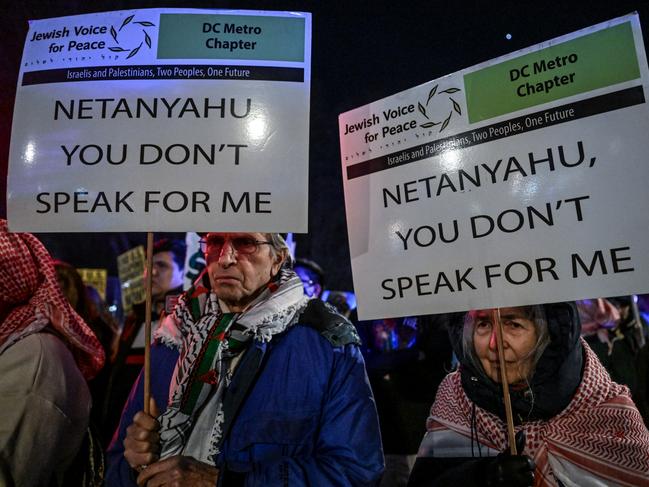
Executive director at the American-Arab Anti-Discrimination Committee (ADC), Abed Ayoub, said Mr Trump’s proposal was “terrifying” and “insane”, but they should not be taken lightly.
“It would go against all norms and international law. This isn’t something that would be permitted to happen,” he told Al Jazeera.
“But at this point, you’ve got to ask yourself if you look at the past year and a half: How much does the international community, including Israel, really care about international law and norms?”
WHAT IS THE GAZA STRIP?
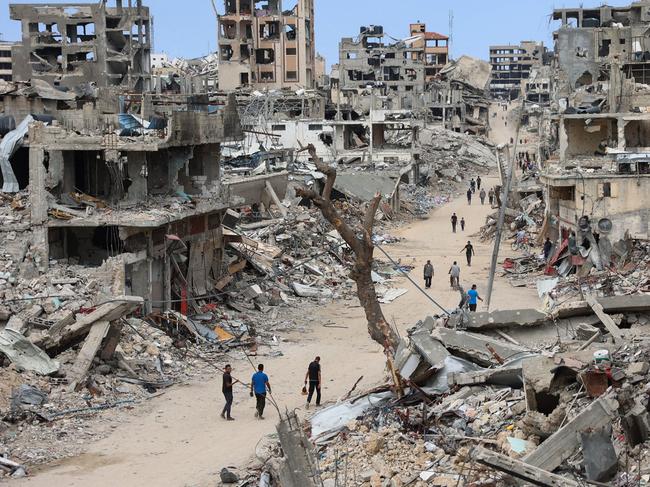
The Gaza Strip is a 40km long slice of land that sits between Israel and the Mediterranean Sea.
It was home to more than two million people before the war broke out.
It’s estimated that during the 15-month conflict six in 10 buildings were damaged, according to experts from the CUNY Graduate Center and Oregon State University who have been analysing satellite data.
The UN believes the damaged buildings include more than 90 per cent of the housing units in Gaza, with 160,000 destroyed and a further 276,000 severely or partially damaged.
WHAT IS THE GAZA CONFLICT ABOUT?
The conflict between Israel and Palestine is one of the longest-running and violent disputes in the world, dating back more than 100 years.
England controlled the area now known as Palestine during World War One, after the Ottoman Empire – which ruled that part of the Middle East – was defeated.
It was occupied by Arab and Jewish people, along with other ethnic groups.
Tensions escalated when the UK established a national home in Palestine for Jewish people.
Jewish people had historic links to the area, but Palestinian Arabs also had claims to the land and opposed the move.
The UK said the rights of Palestinian Arabs who were living there had to be protected.
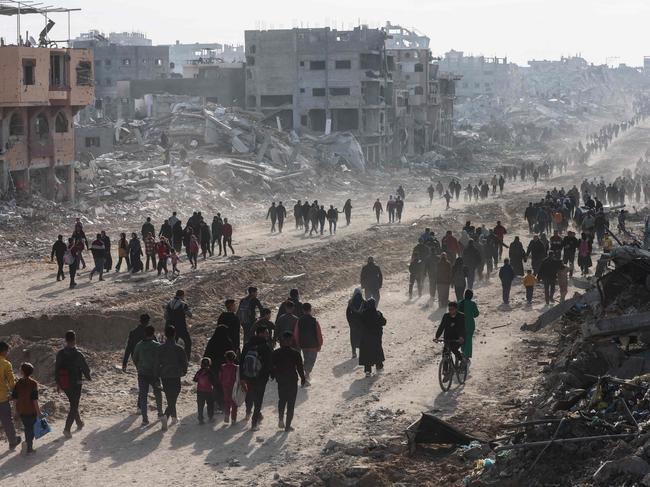
Jewish people fled persecution in Europe between the 1920s and ’40s.
They needed a safe haven from the Holocaust.
By 1947, there was growing violence between the two groups and the UN voted for Palestine to be split into Jewish and Arab states.
Arabs did not support the plan, arguing Jewish people would have more of the land with a smaller population.
Jewish leaders in Palestine declared Israel an independent state before the British rule ended. Israel was then recognised by the UN.
A number of violent disputes followed as each state moved to reclaim land.
Gaza is surrounded by Israel, Egypt and the Mediterranean Sea and is home to 2.3 million Palestinians.
It is one of the most densely populated places on earth, with high levels of poverty.
Egypt was driven out of the Strip in 1967 and it was occupied and controlled by Israel.
Hamas originated in Gaza. Most wars between the states have seen people killed on both sides, but largely Palestinians in Gaza.
WHAT DOES THIS MEAN FOR AUSTRALIA?
Mr Trump’s announcement could pose a political problem for both Labor and the Coalition, months out from a federal election.
Speaking in Canberra shortly after Mr Trump’s announcement, Prime Minister Anthony Albanese said Australia’s position on Israel and Palestine “remains the same”, but refused to answer if the President’s comments were a potential threat to establishing a lasting peace in the Middle East region.
Mr Albanese said so far the Australian Government had not received any requests regarding the rebuilding of Gaza.
Shadow Assistant Foreign Affairs Minister Julian Leeser told Sky Australia the Coalition supported a two-state solution which could be “fast-tracked” if Palestine recognised Israel’s “right to exist”.
In 2018, when the then Australian Prime Minister Scott Morrison backed Mr Trump’s decision to move the site of the US embassy in Israel from Tel Aviv to Jerusalem, and suggested Australia might follow suit, it prompted widespread concern around the Muslim world, and prompted Indonesia to delay signing a $16 billion free trade deal.
More Coverage
Originally published as Donald Trump lays out bold plan for Gaza


